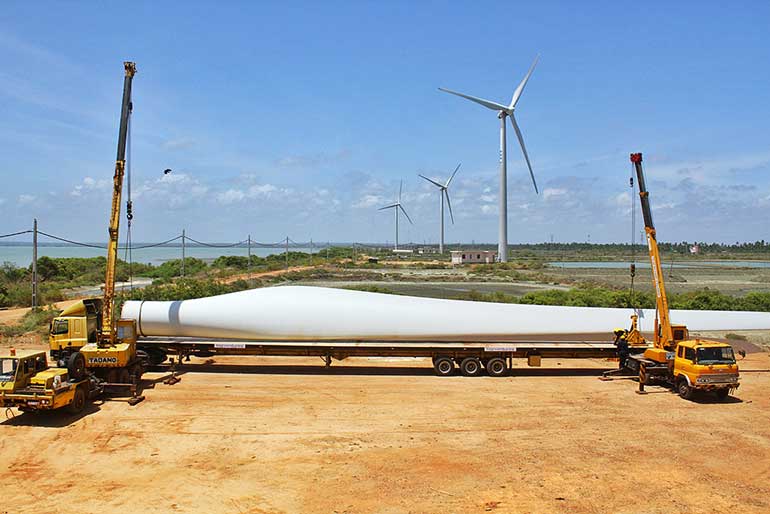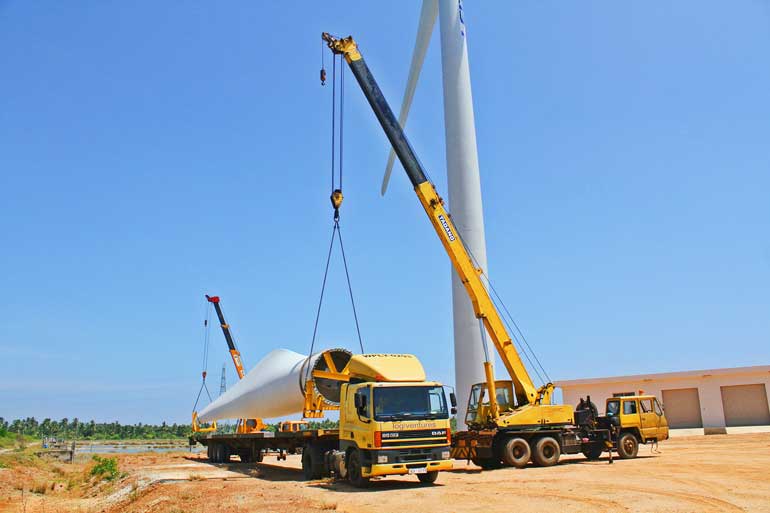Friday Jan 10, 2025
Friday Jan 10, 2025
Monday, 28 March 2016 00:00 - - {{hitsCtrl.values.hits}}

 Sri Lanka’s next big power project in the pipe line is tipped to be coal. However, the country will need to shift to a cleaner alternative for a brighter future and developing the logistical capacity for it will be a crucial factor in deciding the viability of clean energy.
Sri Lanka’s next big power project in the pipe line is tipped to be coal. However, the country will need to shift to a cleaner alternative for a brighter future and developing the logistical capacity for it will be a crucial factor in deciding the viability of clean energy.
Sustainable power generation is fast becoming a reality in many developed countries, with wind power leading the curve. By end 2014, an estimated 369,553 MW of power was generated via wind energy showing an increase of 16% from the previous year.
The cost of installing wind turbines has been one of the biggest hurdles in aggressively seeking more wind energy projects across the world. Meanwhile, developing countries, including Sri Lanka face numerous additional challenges. Primary, is the poor infrastructure within the country including the narrow road network and the tangle of low overhead wires, particularly outside Colombo, making it difficult to transport oversized cargo. The next big hurdle is the lack of local skills and logistics capability to manage the movements and the setting up of such projects. In the past, most windmill projects have had to rely on foreign logistics expertise, further escalating costs.
Advantis Projects, formally known as Logiventures Ltd., a subsidiary of the Hayleys Group, is amongst an elite group of logistics service providers in the region that have the expertise and the specialised equipment needed to manage such projects. Their track record includes the entire ship to shore ground logistics in the North of Sri Lanka, for the successful installation of 16 wind turbines in Pallali.
The highly technical logistical operation over the 230 kilometre stretch from the Trincomalee Port in the East Coast to Pallali in the North was carefully coordinated by a specialised team from Advantis Projects over a span of three months. This included the construction of suitable roads and raising power and telephone lines above the average height permanently along the route.
The transportation of the wind turbine components was one of the biggest challenges faced by the team as each blade alone was 42 metres or approximately 135 feet in length. For comparison, this equals to lining up seven 20 foot containers back to back and manoeuvring through narrow corridors over the 230 kilometre distance.
Advantis Projects General Manager Shadil Rizan said, “Our specialised project team has repeatedly gone above and beyond what was previously thought impossible for a Sri Lankan company with a local crew. All projects had to be highly coordinated, planned to precision with all vehicles using GPS trackers whilst being centrally monitored enabling us to complete the project with zero incidents. It was definitely a proud moment for all of us at Advantis Projects.”
In 2015 it was estimated that Sri Lanka has a total installed capacity of about 130 MW of wind energy.
A significant part of this will not materialise due to numerous other factors including terrain, habitation and vegetation. The cost benefit of using a local logistics team however, can positively influence further investment in cleaner energy production where feasible.